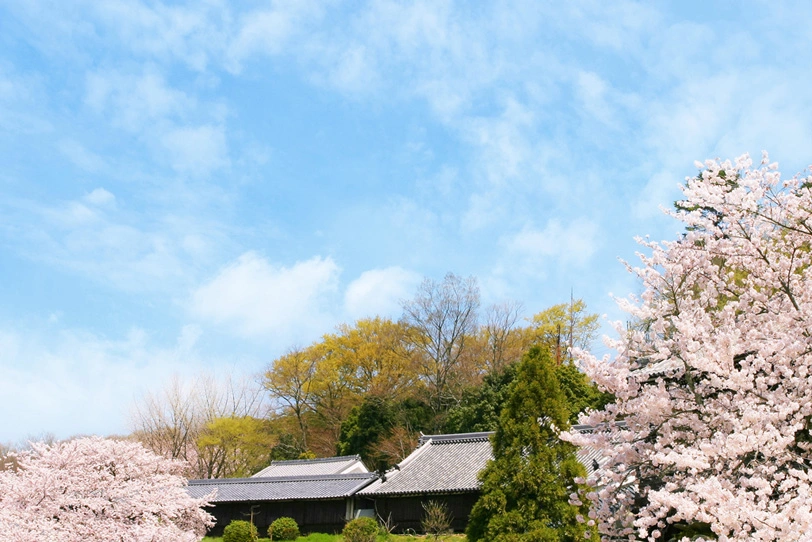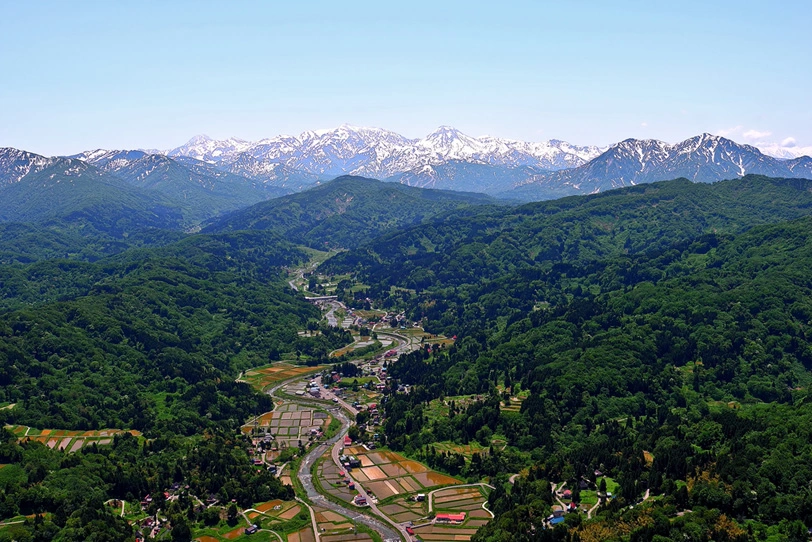
When I hear the word “satoyama,” for some reason I feel a warm feeling of nostalgia.
I did not grow up in a town where there were satoyama, and I have no connection with satoyama, but I really like the sound of it.
The word “satoyama” 里山 sounds nostalgic, because sato 里 means hometown and yama 山 literally means mountain. 故郷 is read as furusato, which means hometown as well.
Furusato does not only mean the land where one was born and raised. Originally, it has a broader meaning of the origin or source of things.
Therefore, the word “hometown” is not written as 故郷 but as 古里 in newspapers, 古 means old. This is because the original meaning is important.
There is an expression, “hometown of the heart.” Kokoro no Furusato 心の古里 means the old birthplace or source of the heart.
With the title “Satoyama, an important satochi-satoyama for biodiversity conservation,” the Ministry of the Environment of Japan states as follows.
Satoyama is an area with diverse natural environments such as farmlands, reservoirs, woodlands, and grasslands. They are located between the relatively natural mountainous and urban areas where human activities are concentrated, and are said to occupy about 40% of the national land area.
The satochi-satoyama environment was formed through various human activities over its long history. Satoyama plays an important role in the supply of natural resources such as food and timber, the formation of favorable landscapes, water source irrigation, national land conservation, a place to interact with nature, and the cultural traditions of the region.
They have also played a role in enriching the natural environment of the Japanese Islands by providing habitats and nurturing grounds for a wide variety of plants and animals. The various blessings brought about by the biodiversity of satochi-satoyama are assets shared by the people of Japan.
The biodiversity of Japan’s satochi satoyama has been maintained through the activities of agriculture, forestry, and other industries that make the most of local nature, the lives of local people, and the involvement of diverse actors such as urban residents, businesses, and schools.
The Ministry of the Environment also states the following
Satochi Satoyama is a natural environment that people have created over a long period of time while coexisting with nature. In Japan, such an environment has been more familiar to people and has nurtured a unique culture and rich sensibility.
Places where people gather, such as rice paddies, streams, fields, and hills. They are also places where flowers, plants, birds, insects, and many other living creatures live nearby as a matter of course. There are many such satochi-satoyama left in Japan.

The Ministry of the Environment has selected 500 important satochi-satoyama throughout Japan in order to preserve for future generations the rich satochi-satoyama that nurture various forms of life.
Satochi-satoyama are the border areas between deep mountains and forests, where no human intervention is allowed, and places where people gather to live their lives. In such places, human activities in harmony with nature are essential.
Currently, many satoyama areas are neglected and left to decay. This results in disrupted ecosystems, with both plants and animals suffering. Wild animals searching for food exacerbate the situation, leading to a vicious cycle. Landslides and other disasters occur as a result. We need to reconsider the fact that we owe our existence to the diverse creatures around us.
I did not grow up in a place like Satoyama.
I have few memories of catching insects and playing with them as a child. But I also don’t remember playing make-believe with dolls.
Still, for some reason I often let my children experience the satoyama.
When I lived in Totsuka-ku, Yokohama, there was a nursery for children near Maioka Park. We often took walks in Maioka Park and experienced rice planting. Even in urban areas where many people gather and live together, there are many satochi-satoyama left in Japan.
There are many more satochi-satoyama than those selected by the Ministry of the Environment.
Even in western Kanagawa Prefecture, where I was looking for a base in Japan, there were always satoyama nearby. The local people were actively involved in conservation activities. While I could sense their dedication to caring for them, there was also a palpable concern that they weren’t being maintained as well as before. We recognize that satoyama rely on human intervention to thrive.
Now that I am based in Kanagawa Prefecture again, I hope to turn my attention to more activities to preserve the satoyama in the region.
The decline of the agriculture, forestry, and fisheries industries is becoming increasingly apparent.
As the aging of workers progresses, more people are relinquishing their agricultural land due to the lack of inheritors. The number of abandoned cultivated lands is rapidly increasing, raising concerns about the precarious state of Japan’s food security.
Upon returning to Japan after ten years, I was surprised.
In a town severely affected by depopulation, it was filled with solar panels. In a town with abundant farmland, the installation of solar panels seemed to have progressed after the land was released. It was quite a shocking sight.
The beautiful landscapes of Japan’s rural mountains… I felt disappointed.
What will happen if we can no longer manage agricultural land and mountain forests?
The balance of ecosystems that have been maintained until now will be disrupted, making it difficult for living creatures to inhabit the environment. Since humans have coexisted with various living creatures in nature, it will have a significant impact on humans as well.
I have seen discussions about forestry on television. It mentioned that if thinning is not carried out in mountain forests, sunlight will not penetrate, leading to an unhealthy ecosystem for trees. Artificial forests planted for timber production are left unattended, causing trees to grow thin and become more susceptible to typhoons and heavy rain. Additionally, the lack of sunlight disrupts the ground’s plant ecosystem, leading to a loss of water retention in the mountains and an increase in the likelihood of soil erosion disasters.
I am curious about the current situation of forestry workers in Japan.
The Ministry of the Environment of Japan is committed to maintaining and rebuilding a sustainable relationship between humans and nature, with the aim of realising a society that coexists in harmony with nature. The Ministry is promoting the Satoyama Initiative in cooperation with international organizations and other countries ahead of the rest of the world. The following video was shot 14 years ago. What is it like today?
This video tells the story of how we Japanese have been living sustainably for many years, living in harmony and unity with nature.
We often see terms such as SDGs these days. The fact that Japan is living the way it is today means that up to a certain point, we have been living in a sustainable manner.
We are here today as a result of our disregard for the natural order of things. However, I question the need for the current, global standard of commitment. There are differences in the global situation and the urgency of environmental issues between now and 14 years ago. Still, there must be a way to do things in Japan that is suited to the Japanese way of life.
We have had satoyama for a long time. Japan has a long history of living in harmony with nature and a rich variety of living creatures.
As Japanese people, we should go back to the basics on this issue.
NHK has been airing a program since 2011 called “Nippon no satoyama: a journey to discover the best scenery of Japan’s satoyama hometowns.
Satoyama is a beautiful world where people and creatures live together and their lives resonate with each other.
I was deeply moved by this narration. I realize that Japan is beautiful because of its satoyama, and its rich culture is also due to satoyama.
By the way, here in New Zealand, especially in the South Island, there still seems to be a lot of nature left. However, in the area around Auckland on the North Island, where I live, if you go a little further into the countryside, you will see a lot of nature that has been destroyed by human hands. The small mountains have been completely stripped bare, and when I drive my car, all I see is monotonous scenery of pastureland.
After people arrived from Europe, many of the trees were cut down and exported. The Maori people, have a sense similar to that of us Japanese that “God resides in everything,” and they have always respected and cherished nature. It must not have been their real intention for their land to have turned out this way.
I believe that we Japanese must protect the nature of our hometowns and the land of Japan, which the Japanese people have spent a long time building up.
The blessings brought to us by the satoyama are the common property of the nation.